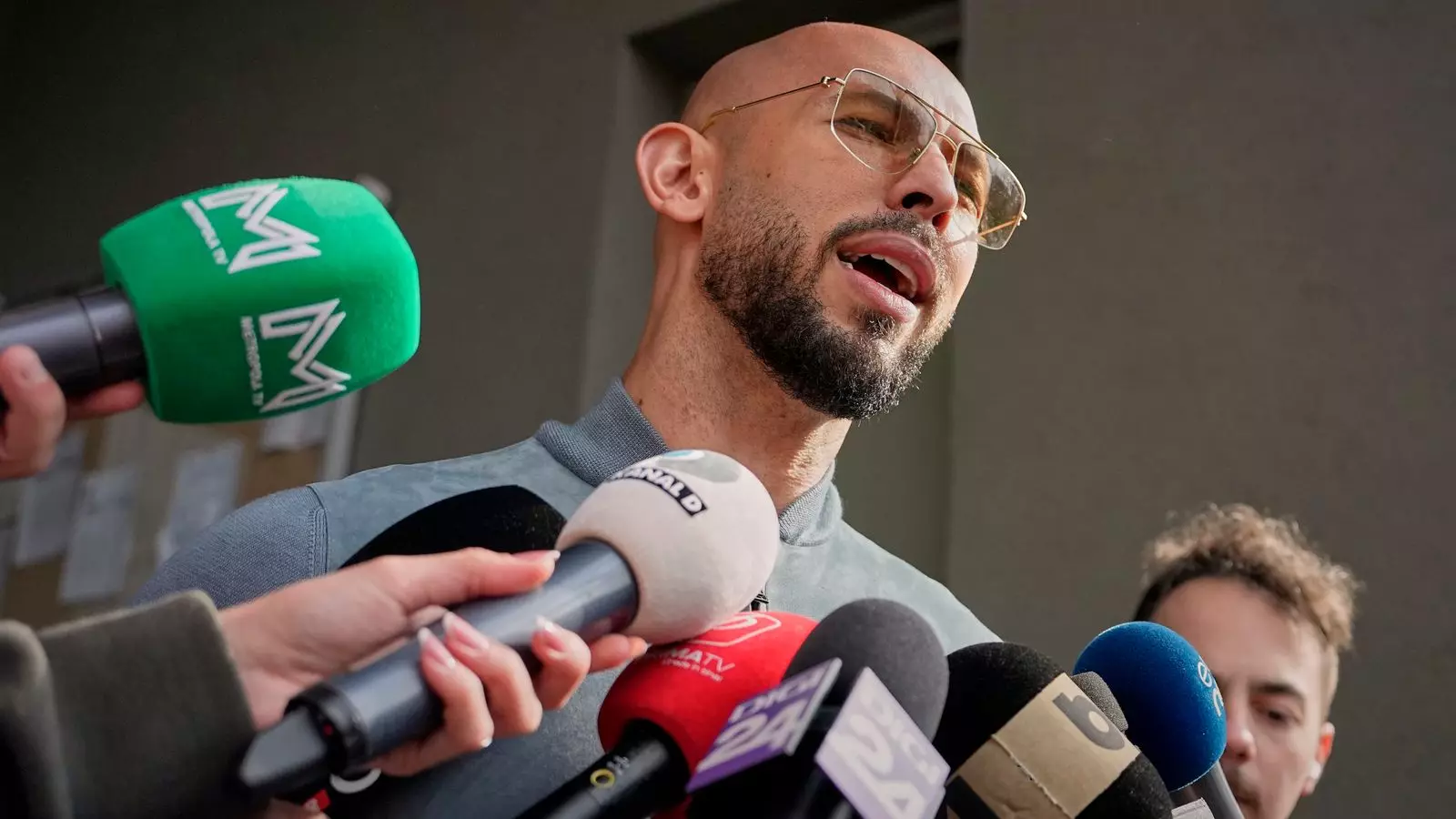In an era where social media reigns supreme, its influence extends far beyond mere entertainment—it seeps into the very fabric of contemporary education and social interaction. A recent survey unveiled by the NASUWT teaching union shines a distressing light on the detrimental effects these platforms, particularly driven by high-profile influencers, are having in British classrooms. Teachers, caught in a battleground where they competently shape young minds, report an alarming increase in misogyny and sexism among teens. Over 5,800 educators participated in this survey, revealing that an overwhelming 59% feel that social media has exacerbated behavioral issues. This clarion call for action emphasizes the urgent need to explore these dynamics deeply.
The Role of Influencers in Normalizing Toxic Behavior
Social media influencers like Andrew Tate have emerged as symbolic figures in this discourse, and their impact transcends mere trends. Recognized for peddling regressive and often toxic views on masculinity, the narratives they present have saturated the minds of impressionable youth. Imagine young boys, merely 10 years old, refusing to acknowledge their female teachers, a chilling testament to how deeply these ideologies have entrenched themselves in their psyche. Such anecdotes expose a paradigm shift in attitude; a change spurred not just by adolescent rebellion but by a calculated influence that glorifies misogyny and devalues women. This isn’t merely a coincidence—it’s a consequence of the relentless messaging that invades daily life through social media platforms.
The Collective Whirlwind of Hate
The dialogue surrounding these trends must also consider the alarming rise of misogynistic cultures that thrive in online enclaves, often termed “incel communities.” The very fabric of conversation in schools is becoming entangled with derogatory phrases and harmful stereotypes—all stemming from digital narratives that these young individuals consume voraciously. Recent discussions at high political levels, including those with Prime Minister Sir Keir Starmer, underscore the pressing necessity to act against this “whirlpool of hatred and misogyny.” The sad reality is that despair and toxic ideology can spread rapidly, leaving young boys entrapped in a cycle of negativity that constitutes a grave threat to their well-being and the dignity of those around them.
The Disconnect Between Political Action and Practical Solutions
Despite the evident need, it seems that the political zeitgeist grapples with formulating effective strategies to counteract this societal malaise. While advocacy for stringent policies, including mobile phone restrictions in schools, resonates with some stakeholders, the question remains: is this enough? The measures proposed by political figures and institutions often feel like reactive, piecemeal solutions rather than comprehensive frameworks addressing the root causes of the problem. As society contemplates bans and restrictions, what is overlooked is the foundational role of education in fostering critical thinking and resilience against harmful ideologies. Empowering young minds through informed discussions on gender dynamics, respect, and human dignity in educational settings must be prioritized over merely censoring technology.
The Urgency of Collaborative Action
Patrick Roach, the general secretary of NASUWT, aptly highlights a significant gap—teachers alone cannot combat this epidemic. There needs to be a cohesive partnership among educators, parents, policymakers, and mental health advocates to cultivate a safe environment where toxicity is addressed head-on. This collective effort must include not only preventive measures but also support systems that equip youth to engage with digital content critically. The alarming rates of mental health issues and tragic events, such as the loss suffered by Kemi Badenoch’s family due to online influence, remind us of the deadly consequences at stake.
It is imperative we nurture an ethos of accountability within social media and its platforms, advocating for parental guidance and fostering environments where students can critically analyze the information they encounter. By embedding these discussions into the curriculum and creating supportive networks, we can foster a generation that respects diversity and champions equality, transforming toxic influences into lessons of empowerment and resilience.

Leave a Reply